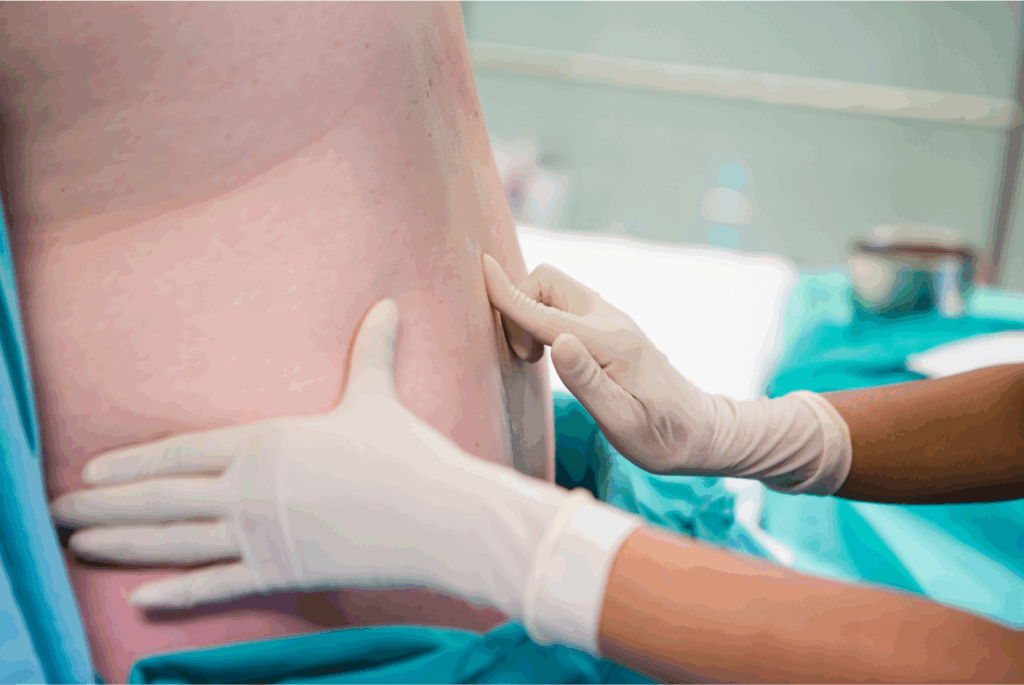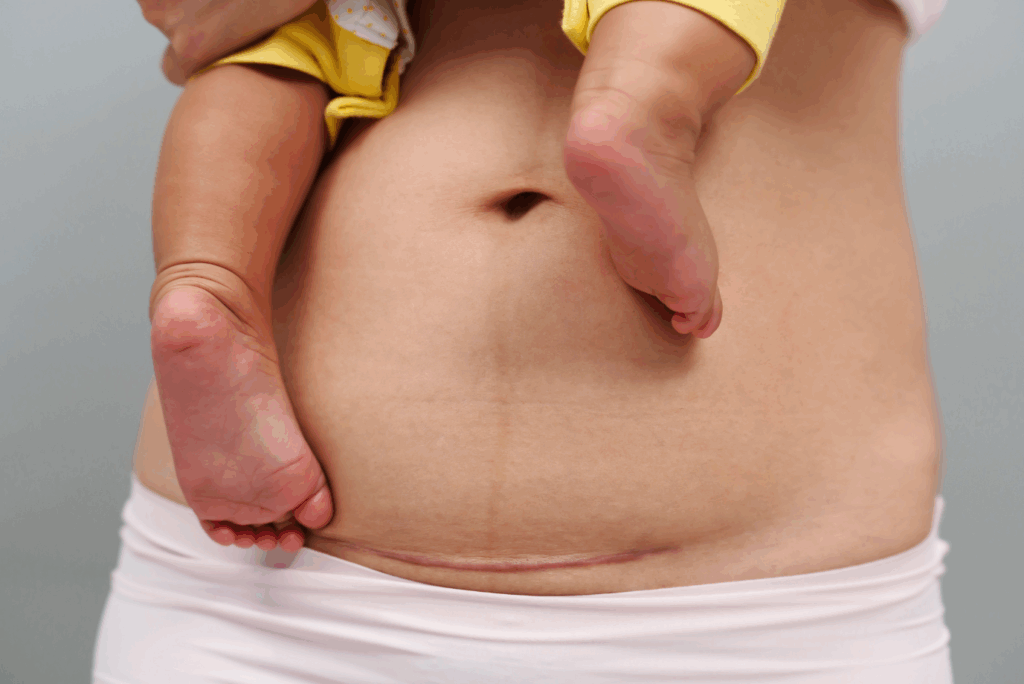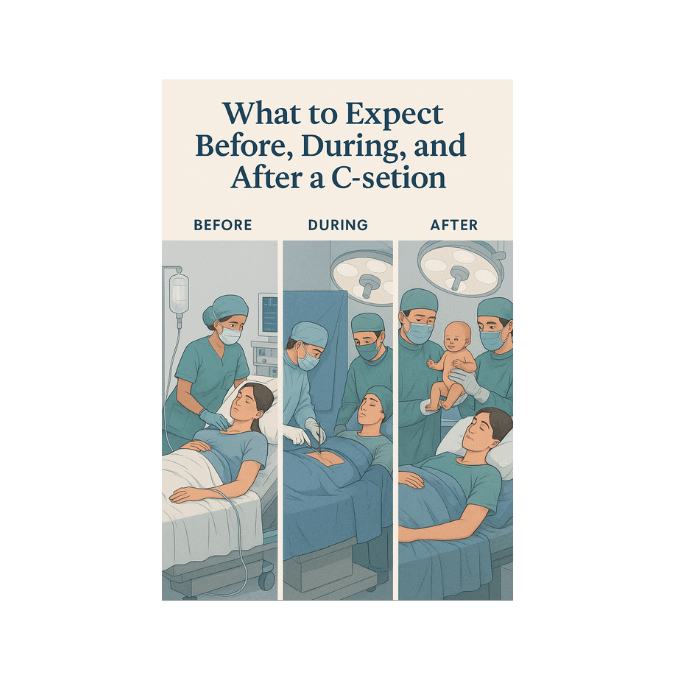Every birth is beautiful, even when it doesn’t go according to plan. For many mothers, a C-section, also known as a Cesarean delivery, becomes part of their story whether planned or unexpected. If you’re wondering what to expect during a C-section, this guide walks you through each stage with warmth and honesty so you can feel informed and confident from start to finish.
🌸 Before a C-Section
The hours leading up to a C-section can feel both exciting and nerve-racking. You might be eager to meet your baby yet anxious about what’s ahead. Knowing what to expect can make those moments less stressful. A nurse will gently help you change into a hospital gown, and an IV line will be started to provide fluids, medications, and sometimes antibiotics to prevent infection. This is routine and helps your body stay strong throughout surgery. Next, the surgical area on your lower abdomen will be cleaned and, if necessary, lightly shaved. The medical team wants to ensure the site is sterile before the incision is made.

Most C-sections are done with spinal or epidural anesthesia, which numbs you from the waist down but allows you to stay awake. You will still feel pressure and movement, but no pain. This means you can experience the birth of your baby while staying alert and aware. In emergency situations, doctors may use general anesthesia, which puts you completely asleep for the surgery. While this is less common, it is sometimes necessary for your safety or your baby’s. Meanwhile, nurses will check your vital signs and monitor your baby’s heartbeat closely.
You will also have a catheter inserted to keep your bladder empty and avoid pressure on the uterus during surgery. As your team prepares the room, take deep breaths and focus on your baby. You are just moments away from meeting your little one. It is normal to feel scared, but remind yourself that you are in capable and caring hands.
💛 During a C-Section
When everything is ready, the doctor will make a small horizontal incision across your lower abdomen, often called the bikini line cut. Then, another incision is made in the uterus so your baby can be delivered. You might feel pressure, tugging, or gentle movement, but not pain. Many moms describe it as “weird, not painful.” The surgical team works efficiently and communicates with you throughout the process so you know what is happening. Within about ten to fifteen minutes, your baby is delivered. This is the moment everything changes.

Your long months of pregnancy, anticipation, and love all come together in one breath and one cry. If you are awake, the staff will try to allow skin-to-skin contact immediately, placing your baby on your chest if both of you are stable. That first touch releases oxytocin, the love hormone, and helps with bonding and breastfeeding. Your support person, whether it is your partner, spouse, or another loved one, is usually allowed in the operating room to comfort you. Their presence can make a world of difference. You might even hear words of encouragement or laughter as your doctor announces, “Here’s your baby.” The entire surgery typically lasts forty-five to sixty minutes, including the closing of incisions. Once your baby is safely delivered, the doctor will stitch or staple the uterus and abdomen while your medical team monitors your vitals.
🌷 After a C-Section
As the anesthesia wears off, you will move into a recovery room where nurses monitor your blood pressure, bleeding, and overall comfort. It is completely normal to feel cold, shaky, or emotional as your body begins to recover from surgery and the rush of hormones.
🤱 The First Few Hours
During the first few hours, your nurse will encourage you to rest and bond with your baby. If your baby is stable, you can breastfeed right away. Your nurse can show you comfortable positions that protect your incision, such as the football hold or side-lying position.
You will also start pain medication to manage soreness. Do not hesitate to ask for it. Recovering comfortably helps you heal faster and focus on your baby.
Most hospitals encourage walking within twelve to twenty-four hours after surgery. It may seem daunting, but gentle movement helps prevent blood clots, boosts circulation, and promotes healing. Start slowly and have your partner or nurse assist you.
🏥 Hospital Stay
- Expect to stay in the hospital for two to four days. During this time, your nurses will:
- Check your incision and show you how to care for it
- Monitor your bleeding to ensure it is normal
- Help with breastfeeding or bottle feeding
- Teach you safe ways to move, like rolling to your side before sitting up
- Encourage light activity to help your body regain strength
- Meanwhile, your doctor will visit to check your progress and answer any questions. Before discharge, you will learn what to watch for at home, such as fever, redness, or increased pain around the incision, which could signal infection.
🌼 Recovery at Home

Recovery does not end when you leave the hospital. It is just beginning. Full recovery from a C-section usually takes six to eight weeks, though every mother heals at her own pace. At home, avoid heavy lifting, driving, and intense exercise until your doctor clears you. Focus on rest, gentle movement, and nutrition. Eat nourishing foods rich in protein and vitamins to help your body rebuild and repair tissue. When you cough, laugh, or stand up, press a pillow gently against your abdomen for support. It can reduce pain and protect your incision. Wear loose, soft clothing and high-waisted underwear that will not rub against the scar area.
As you heal, it is natural to notice swelling or a small C-section pouch above your incision. This happens because the body forms scar tissue and holds fluid around the area. With time, gentle exercises, and self-care, it can fade. Ask your doctor about safe postpartum exercises like pelvic tilts, walking, or light stretching to restore your core strength. Avoid crunches or sit-ups until you are cleared, as these can strain the healing muscles.
💕 Emotional Healing and Self-Care
C-section recovery is not only physical. It is deeply emotional too. You might feel joy, relief, frustration, or guilt if your birth did not go as planned. All these emotions are valid. Remember, you did not fail. You brought life into the world in the way that was safest for you and your baby. Give yourself grace. Ask for help when you need it from your partner, family, or friends. Healing from major surgery while learning to care for a newborn takes courage and patience. Celebrate small victories: walking to the nursery, nursing comfortably, or simply holding your baby without pain.
🌟 Final Thoughts
Every C-section story is different, but they all share one truth: they mark the moment you became a mother. Whether your delivery was planned or unexpected, smooth or complicated, it is part of your strength and your story. Recovery takes time, but it is also filled with moments of love, growth, and connection. With the right care, support, and self-compassion, you will heal beautifully, inside and out.


